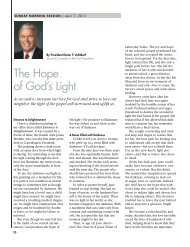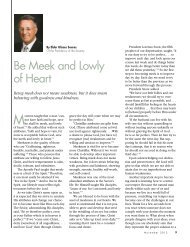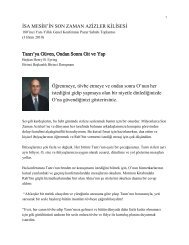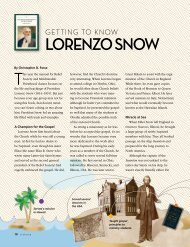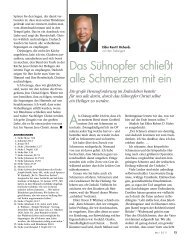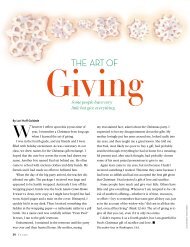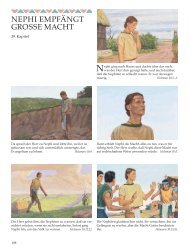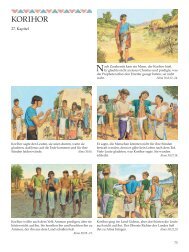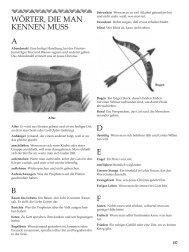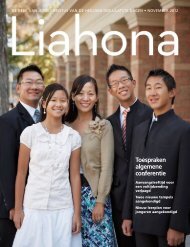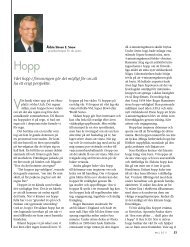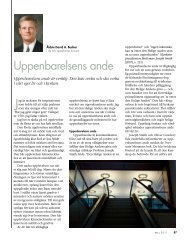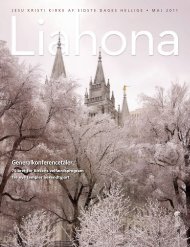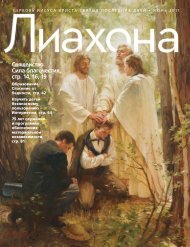Ensign, Nov. 2007 - The Church of Jesus Christ of Latter-day Saints
Ensign, Nov. 2007 - The Church of Jesus Christ of Latter-day Saints
Ensign, Nov. 2007 - The Church of Jesus Christ of Latter-day Saints
Create successful ePaper yourself
Turn your PDF publications into a flip-book with our unique Google optimized e-Paper software.
90<br />
Truth: <strong>The</strong><br />
Foundation <strong>of</strong><br />
Correct Decisions<br />
ELDER RICHARD G. SCOTT<br />
Of the Quorum <strong>of</strong> the Twelve Apostles<br />
A knowledge <strong>of</strong> truth is <strong>of</strong> little value unless we apply it<br />
in making correct decisions.<br />
Since truth is the only meaningful<br />
foundation upon which we<br />
can make wise decisions, how<br />
then can one establish what is really<br />
true? Increasingly more people are<br />
finding that making wise decisions is<br />
becoming more and more difficult<br />
because <strong>of</strong> the ultra-interconnected<br />
world in which we live. Constantly<br />
forced into our consciousness is an<br />
incessant barrage <strong>of</strong> counsel, advice,<br />
and promotions. It is done by a bewildering<br />
array <strong>of</strong> media, Internet, and<br />
other means. On a given subject<br />
we can receive multiple strongly<br />
delivered, carefully crafted messages<br />
with solutions. But <strong>of</strong>ten two <strong>of</strong><br />
the solutions can be diametrically<br />
opposed. No wonder some are confused<br />
and are not sure how to make<br />
the right decisions.<br />
To further complicate matters, others<br />
try to persuade us that our decisions<br />
must be socially acceptable and<br />
politically correct. Some pondering <strong>of</strong><br />
that approach will reveal how wrong<br />
it is. Since social and political structures<br />
differ widely over the world and<br />
can dramatically change with time,<br />
the folly <strong>of</strong> using that method to<br />
make choices is apparent.<br />
<strong>The</strong>re are two ways to find truth—<br />
both useful, provided we follow the<br />
laws upon which they are predicated.<br />
<strong>The</strong> first is the scientific method. It<br />
can require analysis <strong>of</strong> data to confirm<br />
a theory or, alternatively, establish a<br />
valid principle through experimentation.<br />
<strong>The</strong> scientific method is a valuable<br />
way <strong>of</strong> seeking truth. However,<br />
it has two limitations. First, we<br />
never can be sure we have identified<br />
absolute truth, though we <strong>of</strong>ten<br />
draw nearer and nearer to it. Second,<br />
sometimes, no matter how earnestly<br />
we apply the method, we can get the<br />
wrong answer.<br />
<strong>The</strong> best way <strong>of</strong> finding truth is<br />
simply to go to the origin <strong>of</strong> all truth<br />
and ask or respond to inspiration. 1<br />
For success, two ingredients are<br />
essential: first, unwavering faith in the<br />
source <strong>of</strong> all truth; second, a willingness<br />
to keep God’s commandments<br />
to keep open spiritual communication<br />
with Him. Elder Robert D. Hales<br />
has just spoken to us about that personal<br />
revelation and how to obtain it.<br />
Scientific Approach 2<br />
What have we learned from the scientific<br />
approach to discovering truth?<br />
An example will illustrate. Try as I<br />
might, I am not able, even in the smallest<br />
degree, to comprehend the extent,<br />
depth, and stunning grandeur <strong>of</strong> what<br />
our holy Heavenly Father, Elohim, has<br />
permitted to be revealed by the scientific<br />
method. If we were capable <strong>of</strong><br />
moving outward into space, we would<br />
first see our earth as did the astronauts.<br />
Farther out, we would have a<br />
grandstand view <strong>of</strong> the sun and its<br />
orbiting planets. <strong>The</strong>y would appear as<br />
a small circle <strong>of</strong> objects within an enormous<br />
panorama <strong>of</strong> glittering stars.<br />
Were we to continue the outward journey,<br />
we would have a celestial view <strong>of</strong><br />
our Milky Way spiral, with over 100 billion<br />
stars rotating in a circular path,<br />
their orbits controlled by gravity<br />
around a concentrated central region.<br />
Beyond that, we could look toward a<br />
group <strong>of</strong> galaxies called the Virgo<br />
Cluster, which some feel includes our<br />
Milky Way, estimated to be about 50<br />
million light years away. Beyond that,<br />
we’d encounter galaxies 10 billion light<br />
years away that the Hubble telescope<br />
has photographed. <strong>The</strong> dizzying enormity<br />
<strong>of</strong> that distance is suggested by<br />
noting that light travels 700 million<br />
miles an hour. Even from this extraordinary<br />
perspective there would not be<br />
the slightest evidence <strong>of</strong> approaching<br />
any limit to God the Father’s creations.<br />
As awe inspiring as this incredible<br />
view <strong>of</strong> the heavens would present,<br />
there is another consideration equally



